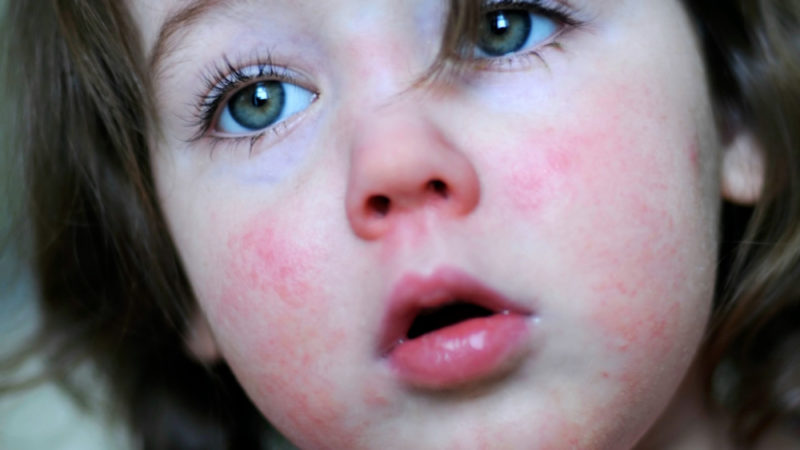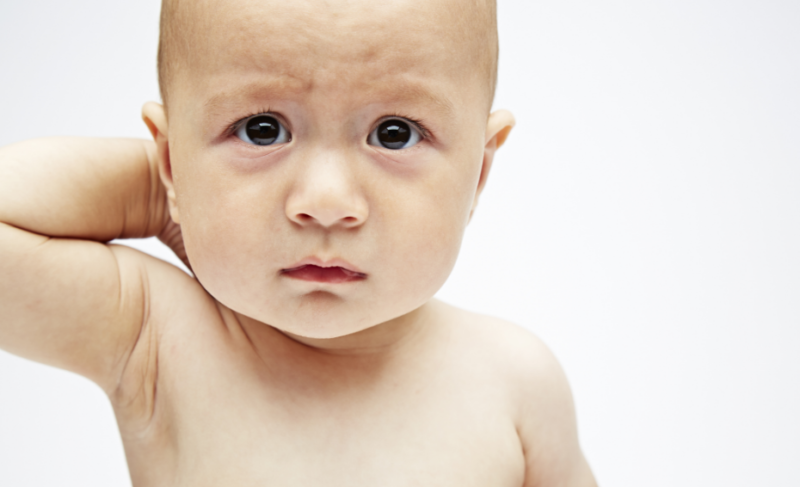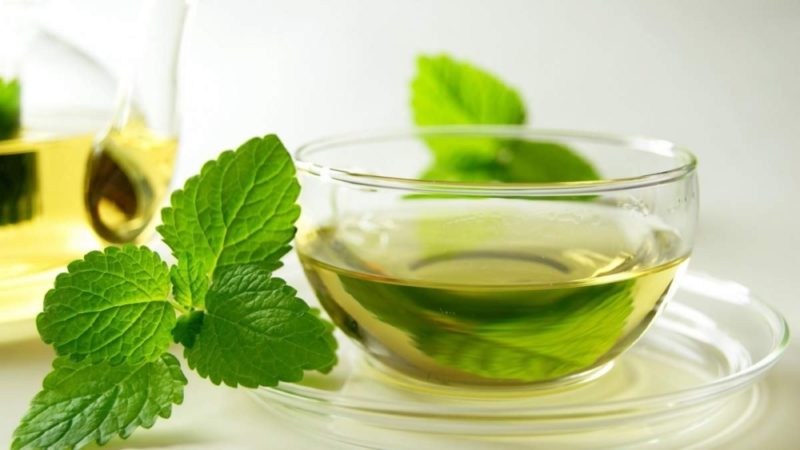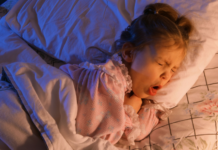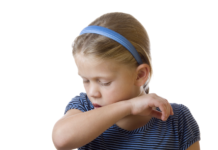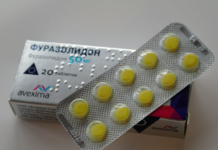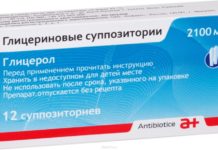Many parents are faced with signs of urticaria in children. This dermatological pathology can be complicated by multiple health conditions. How to eliminate the signs of urticaria in children, and is it really possible to protect the child from this ailment?
Material Content:
What is urticaria
Urticaria / urticaria (Latin urtica - nettle) is a skin disease of an allergic nature, recognizable by the presence of blisters on the mucous membranes and skin. A similar allergic rash may be accompanied by painful symptoms.
In general, urticaria is a combination name that combines a number of types of dermatitis.
There are several types of disease:
- Acute urticaria. It manifests itself as severe itching, burning, swelling of the skin.
- Giant urticaria. Impressive edema that threatens the patient's life is monitored on the mucous membranes and larynx.
- Solar urticaria. For her, typical manifestations of a rash in open areas of the skin, often manifested in the summer.
- Chronic urticaria. The rash eliminated during treatment after a while appears again.
Some statistics. About 30% of the world's population observed typical manifestations of urticaria at least once in their life. Most of them are women and children. In 40% of cases, the disease is complicated by a dangerous condition - Quincke's edema.
Causes of Children
Often the causes of urticaria are:
- The action of infectious pathogenic fungi, bacteria.
- Allergy to mechanical phenomena (exposure to temperature, sunlight and other factors).
- Eating allergenic foods, contact with an allergen.
- The use of certain medications.
- Vaccine response.
- Blood transfusion.
- Insect bites.
Dust, house mites that live in furniture and clothing, pollen, wearing latex and synthetics can also cause hives to develop.
Did you know? In approximately 1/3 of the patients, the causes of the development of urticaria remain unclear.
Symptoms of ailment
Urticaria affects large areas of the body. The developing rash is capable of being distributed pointwise on the upper limbs.
In children under 3 years of age, a number of symptoms of urticaria are monitored:
- problems with bowel function;
- loss of appetite;
- vomiting
- sleep disturbance.
Often, the main manifestations of urticaria are monitored in babies by artificial feeding. Subjected to the disease and older children, whose diet does not match the age characteristics. In these cases, a rash in the form of peculiar nodules and blisters is visualized on the patient's body. Little by little, the blisters become pinkish-brown knots with a diameter of up to 3 mm, crowned with a small bubble. These formations itch, and then the skin is covered with crusts, scratches and erosion.
Diagnosis of the disease
Urticaria in children differentiates with scabies, since the symptoms of these two diseases are extremely similar.
The diagnosis is determined by the patient's complaints and a thorough examination of his skin. In order to determine the exact type of allergy, allergological tests are performed.
In some cases, urticaria is characterized by a secondary nature, in other words, it appears as an application to other diseases. These include autoimmune diseases or pathologies of the gastrointestinal tract, kidneys, etc. This situation requires a more extensive and detailed examination.
The basic methods for diagnosing urticaria include:
- general analysis of urine, blood;
- specific analysis for allergens;
- blood chemistry;
- blood test for syphilis.
In addition, the patient is assigned an ultrasound of the internal organs, ECG, X-ray.
Note. Many patients, having tracked once the manifestations of urticaria and eliminating its symptoms on their own, do not resort to medical care for a detailed diagnosis. And, as it turns out, completely in vain. Uurticaria is a kind of signal that there are malfunctions and possible malfunctions in the body. Subsequent manifestations of the pathology may not be so harmless and can lead to multiple complications.
First aid for urticaria
First aid for urticaria, especially its acute form, is as follows:
- The exclusion of all products that can act as allergens, even when they are not the cause of the development of urticaria. This includes citrus fruits, seafood, berries, egg white, chocolate, nuts and so on.
- If urticaria is provoked by an insect bite, cold should be applied to the affected area and try to remove the poison that has got into the child’s body.
- When the rash area is extensive, a cool bath will help ease the patient's condition. It is permissible to add decoctions of medicinal herbs to the water.
- Itching is permissible to remove with the use of soda. A small amount of powder should be diluted with warm water and distribute the resulting slurry to problem areas. The dried mixture must be washed off with water.
It is important to prevent the development of Quincke's edema - if you suspect it, an ambulance is called. Doctors will administer an adrenaline injection and an antihistamine to the patient and help with respiratory arrest.
Tip. If a child has a tendency to allergic manifestations, antihistamines should always be at hand for immediate action.
However, when choosing such medicines, the doctor’s recommendations should be considered. The specialist will advise suitable remedies, taking into account the age of the child and the area of damage with urticaria.
Traditional treatments
Urticaria treatment is aimed at tracking and eliminating allergens.When the latter cannot be traced (the disease appears occasionally), antihistamines will help stop the symptoms.
Tip. During the treatment of urticaria, it is very important to adhere to a hypoallergenic diet. The child should not be in contact with chemicals. Means for bathing and shampooing should not contain various fragrances.
Therapy of urticaria is carried out by an allergist / immunologist / dermatologist.
The latter may prescribe:
- Gels with cooling and decongestant action (Dimethiden, Fenistil, etc.).
- Of the antihistamines taken, Fexofenadine, Loratadine, and calcium gluconate are recommended. Medicines do not provoke adverse reactions.
- If antihistamine treatment does not bring the desired results, severe forms of urticaria can be treated with corticosteroids and hormone-containing drugs.
- Symptoms of food urticaria are eliminated by taking laxative sorbents, as well as an impressive amount of fluid, in order to remove the allergen from the body.
It is interesting. The newest word in the treatment of urticaria is autolymphocytotherapy. It consists in the following: from the patient’s blood, elements of his own immune system are released. The resulting cell particles are injected subcutaneously immediately after stopping the attack of urticaria. Medical statistics indicate the effectiveness of such an innovative technique.
Folk remedies
Folk remedies are no less effective as auxiliary methods for the treatment of urticaria. The following recipes are considered the most popular.
Mint infusion.
Components:
- dried mint - 40 g;
- boiling water - 1.5 tbsp.
Cooking method:
- Dry grass is poured with boiling water.
- The mixture is infused for 2 to 3 hours.
- Tincture is taken three times a day 30 minutes before a meal.
Herbal baths.
Components:
- peppermint - 5 tbsp. l .;
- celandine (chamomile) - 5 tbsp. l .;
- boiling water - 1 l.
Cooking method:
- The resulting collection is poured with boiling water and infused in a thermos for 5 to 6 hours.
- The infusion is expressed, added to the water prepared for bathing the child, in the amount of 1 cup.
- Such baths are taken once a day for 15 to 20 minutes.
- The water temperature should be 36 ° C.
Hypoallergenic diet
A diet for urticaria is relevant if dermatitis is triggered by an allergic reaction to foods. At the same time, it is worth completely eliminating possible “pathogens” from the diet.
Forbidden products include:
- eggs
- spicy vegetables (radish, horseradish, radish);
- coffee;
- sugar, pastries, (most sweets);
- nuts
- citrus;
- juices;
- seafood, fish;
- mushrooms;
- cheese;
- alcohol.
Patients should also refuse fatty, fried foods, including spices, preservatives. Red fruits and berries can also act as allergens.
Utticaria approved products:
- white bread (dried);
- cereals (rice, oatmeal, buckwheat);
- dairy products;
- vegetable soups;
- vegetables and fruits (excluding prohibited);
- boiled beef, turkey, chicken;
- dried fruit compote, tea.
Cooked meals can be flavored with vegetable oil. Duration of diet is best discussed by your doctor.
Prevention of exacerbations of urticaria in children
Prevention of possible exacerbations and relapses of urticaria in babies is as follows:
- refusal to take a cold shower (only warm);
- dieting;
- refusal to use creams that provoke dry skin.
- exclusion of contact with allergens;
- normalization of the nervous system and gastrointestinal tract;
Urtikaria is a dermatological disease that affects most of the children and the fairer sex. The main danger of this pathology is the risk of developing life-threatening Quincke edema. Parents whose child is prone to urticaria should keep antihistamines in their reach, and in especially severe cases, immediately seek medical help.


